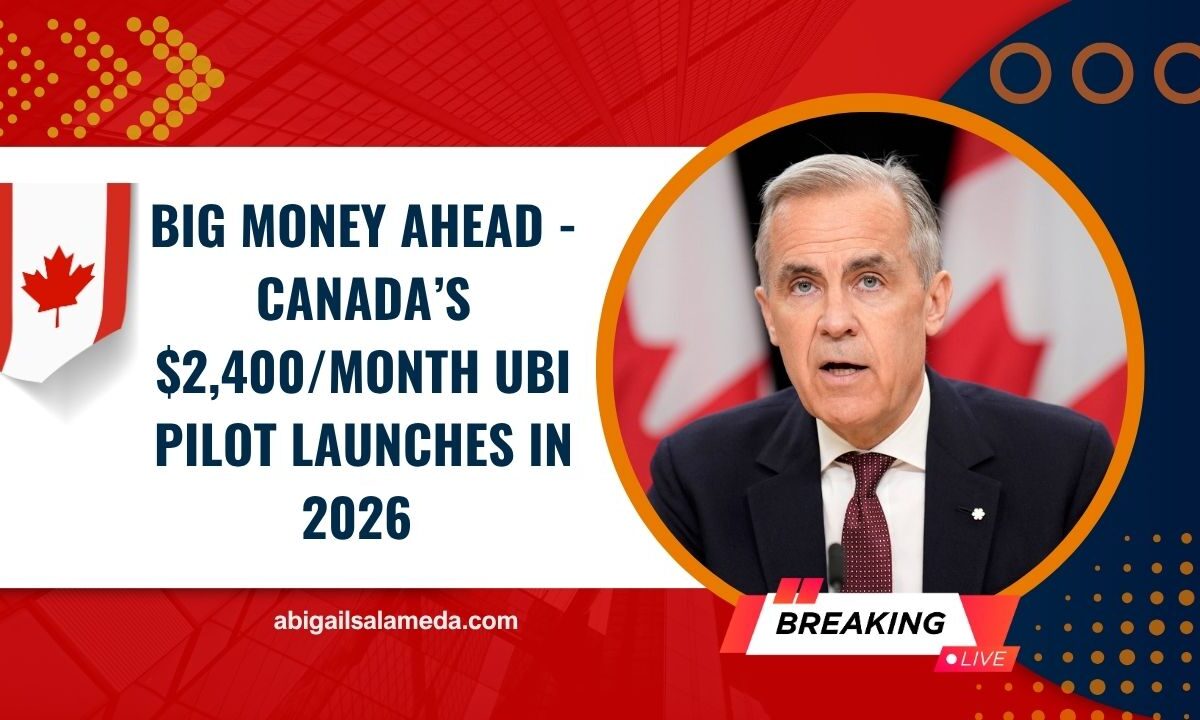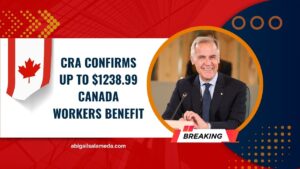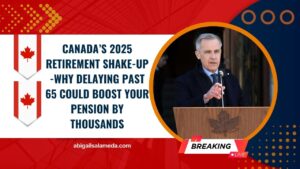Canada is preparing to roll out a groundbreaking Universal Basic Income (UBI) pilot in 2026, offering tax-free monthly payments up to $2,400 to low- and middle-income individuals.
Funded federally and aimed at evaluating unconditional financial support, this initiative seeks to tackle systemic inequality and provide Canadians with financial security, regardless of their employment status.
This article dives into the details of this UBI pilot, explores eligibility criteria, outlines payment amounts, explains why it matters, and describes how this initiative could reshape Canada’s social and economic landscape.
What Is the 2026 UBI Pilot?
The UBI pilot is part of a broader strategy to explore a universal monthly payment system with no strings attached—no need to work, no means testing, and no punitive reductions. Funded nationally and tested in select provinces, it aims to uncover the real-world impacts of stable income security.
Eligibility: Who Qualifies?
The UBI pilot focuses on 18+ Canadians from selected provinces—initially including Ontario and British Columbia. It prioritizes inclusivity, especially for Indigenous peoples, newcomers, and persons with disabilities.
| Criteria | Requirement |
|---|---|
| Age | 18 or older |
| Income | Less than $30,000 annually (singles), joint limit under $50,000 for couples |
| Residency | Resident of pilot provinces (e.g., Ontario, BC) |
| Current Benefits | Must not receive equivalent federal financial aid |
| Demographic Priority | Indigenous, newcomers, persons with disabilities prioritized |
Final eligibility rules will be released in early 2026, after enabling legislation is passed.
Payment Amounts: How Much and When?
The pilot offers non-taxable monthly payments for a period of 24 months, with amounts varying by household status and need:
| Household Type | Estimated Monthly Payment | Taxable | Income Threshold |
|---|---|---|---|
| Single Adult | $1,200 | No | <$30,000/year |
| Couple (no children) | $2,000 (shared) | No | Joint income <$50,000/year |
| Family with children | $1,800–$2,400 (monthly) | No | Varies by dependents |
Recipients can continue working, studying, or volunteering while receiving payments; the program is designed to complement other forms of support.
Pilot Duration & Implementation
- Start Date: 2026
- Duration: 24 months (two years)
- Delivery Method: Direct deposit into participants’ bank accounts
- Purpose: Evaluate impacts on mental health, employment, education, and spending behaviours
Why Launch a UBI Pilot?
The pilot aims to tackle key challenges Canada faces today:
- Poverty & financial insecurity: Help low-income individuals meet basic needs
- Income gap reduction: Promote equitable wealth distribution
- Simplify welfare: Reduce bureaucracy by consolidating aid
- Empowerment: Provide families with autonomy and flexibility
- Evidence-based policy: Offer concrete data to inform future social programs
Advocates suggest UBI enhances dignity and freedom; critics question long-term costs and labor market impacts. This pilot aims to answer those questions with real-world evidence.
Differences from Past Trials
Canada has experimented with basic income before, such as in Ontario in 2017, but the 2026 pilot brings new improvements:
- National oversight and funding, not just provincial
- Bipartisan backing for sustained implementation
- Larger, more diverse participant pool across regions
- Focus on inclusion for marginalized groups
- Voluntary reporting on employment, health, and finances
- Transparent milestones and ongoing public updates
This version aims to address past pilot shortcomings in order to provide more conclusive and actionable results.
What the Pilot Will Evaluate
The project will be studied closely, with a focus on measuring:
- Work Patterns: Will participants stay employed or adjust their work hours?
- Health Outcomes: Does income security improve physical and mental health?
- Education and Training: Do participants pursue more education or skills?
- Spending Habits: How do recipients allocate funds over time?
These metrics will guide governments on whether UBI should be integrated into national policy.
Interaction with Other Benefits
One big plus of this scheme is that it won’t take away any of the perks that are already there .Since UBI payments are tax-free, they’re designed to stack alongside:
- Canada Child Benefit (CCB)
- GST/HST Credit
- Provincial housing or disability supports
This ensures participants receive genuine extra income, not a replacement for other programs.
Employment and UBI
The UBI pilot places no restrictions on income from work, study, or volunteering. Participants will retain full payments regardless of earnings, allowing:
- Freedom to reduce or shift work without losing benefits
- Opportunities to pursue skills development or caregiving
- The ability for policymakers to observe real behaviour in response to income security
The Canada UBI Pilot 2026, which gives people up to $2,400 a month, is a big change in how the country deals with income disparity and financial independence.
With a focus on equity, simplicity, and evidence-based outcomes, this ambitious pilot could shape the future of social safety nets in Canada.
You should watch this pilot if you care about financial stability, are curious about public policy, or are looking for help. Its findings may pave the way toward a more inclusive and supportive socioeconomic landscape.
FAQs
Who qualifies for the UBI pilot?
Canadian residents aged 18+ in participating provinces (e.g., Ontario, BC), earning below $30,000/year (or a joint income threshold of $50,000), and not receiving equivalent federal aid. Priority for Indigenous peoples, newcomers, and persons with disabilities.
How much will recipients receive?
Single participants could receive $1,200 monthly, couples up to $2,000, and families $1,800–$2,400. The payments are tax-free and delivered over 24 months via direct deposit .
Will UBI affect existing benefits?
No. UBI does not replace current benefits and will not reduce eligibility for programs like Canada Child Benefit, GST/HST credit, or provincial assistance.




